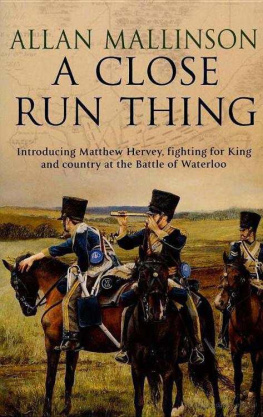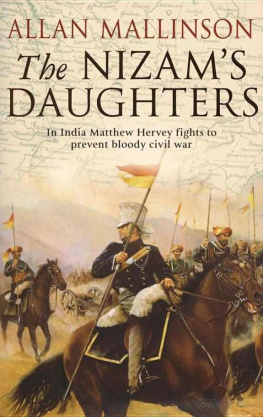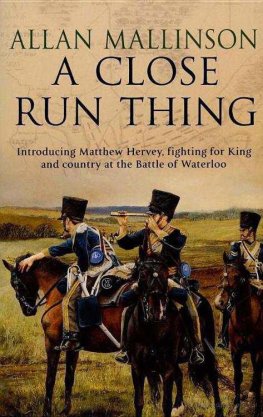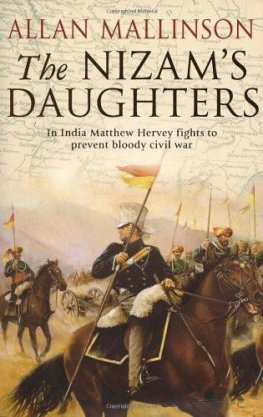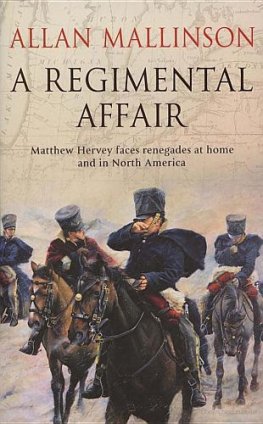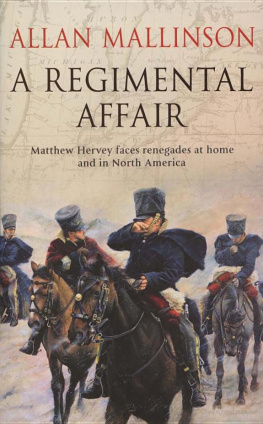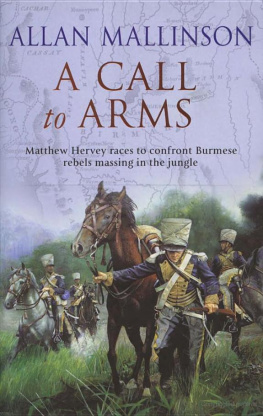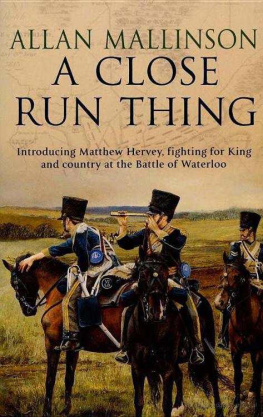A CLOSE RUN THING

ALLAN MALLINSON

BANTAM PRESS
LONDON NEW YORK TORONTO SYDNEY AUCKLAND
Contents
This eBook is copyright material and must not be copied, reproduced, transferred, distributed, leased, licensed or publicly performed or used in any way except as specifically permitted in writing by the publishers, as allowed under the terms and conditions under which it was purchased or as strictly permitted by applicable copyright law. Any unauthorised distribution or use of this text may be a direct infringement of the authors and publishers rights and those responsible may be liable in law accordingly.
Version 1.0
Epub ISBN 9781407057354
www.randomhouse.co.uk
TRANSWORLD PUBLISHERS LTD
61-63 Uxbridge Road, London W5 5SA
TRANSWORLD PUBLISHERS (AUSTRALIA) PTY LTD
15-25 Helles Avenue, Moorebank, NSW 2170
TRANSWORLD PUBLISHERS (NZ) LTD
3 William Pickering Drive, Albany, Auckland
Published 1999 by Bantam Press a division of Transworld Publishers Ltd Copyright Allan Mallinson 1999
Reprinted 1999
The right of Allan Mallinson to be identified as the author of this work has been asserted in accordance with sections 77 and 78 of the Copyright, Designs and Patents Act 1988.
A catalogue record for this book is available from the British Library.
ISBN 0593 043731
All rights reserved. No part of this publication may be reproduced, stored in a retrieval system, or transmitted in any form or by any means, electronic, mechanical, photocopying, recording, or otherwise, without the prior permission of the publishers.
Typeset in 11/13pt Times by Phoenix Typesetting, Ilkley, West Yorkshire
Printed and bound in Great Britain by Clays Ltd, St Ives plc.
To
The Light Dragoons
(formerly the 13th/18th and the 15th/19th Hussars)
In whose history, character and personalities I have
found much inspiration for this story.
AUTHORS NOTE
This is not just the story of an officer in the Duke of Wellingtons army: it is the story of a regiment that peculiarly British institution which John Keegan, the most percipient historian and observer of all things military, has described as an accidental act of genius. Every regiment was still is different, and revelled in that difference. The difference was not just in the people but in the regiments history and traditions the received notions of how things should be done, the esprit, the spirit.
The 6th Light Dragoons are a fictitious regiment, but the events in which they take part are historical fact. The major characters outside the regiment are real figures of history. Occasional liberties have been taken General Slade did not go to Ireland in 1814, for instance but not in any way that changes the historical plausibility of the story.
The army of 1814 was singular. It had endured five years of campaigning in the Peninsula, and it had gone from success to success, until the duke was able to remark, famously, that it could go anywhere and do anything. Sir Charles Oman, one of the two greatest historians of the campaign (the other being Sir William Napier), made also this interesting observation: A very appreciable number of men were of a religious turn a thing I imagine to have been most unusual in the army of the eighteenth century. (Wellingtons Army, 18091814.)
The army was not, of course, without its faults. Neither was the duke. One of the most controversial matters was the purchase of commissions, the system by which officers of the cavalry and the infantry bought their promotion, a system that the duke strenuously upheld long after the war. This is a complex issue, however, and not one to be taken at face value. I know of no better (or more entertaining) explanation of it than that in Volume One of the Marquess of Angleseys History of the British Cavalry 18161919, which, incidentally, is also the most readable authority on horse-soldiering in the early nineteenth century.
Readers who wish to know more about the organization and equipment of the army at this time should consult the detailed reference works by Mr Philip Haythornthwaite: they have no equal. I am indebted, too, to Major (retd) John Oldfield, sometime curator of the Small Arms Museum at the School of Infantry, Warminster. The museum is an unrivalled collection of both weapons and knowledge, and (though the fact is little known) is open to visitors, by appointment. My wife, whom I met in a stable, has been an unfailing aid in finding the right words to describe the horses and their world: she has kept me from the worst metaphorical falls.
Any Englishman writing even a little about Ireland needs an Irish interlocutor of exceptional patience. I have been immensely fortunate in the friendship and support of Brigadier-General (retd) Pat Hogan, late of the Irish Defence Forces and president of the Irish Military History Society. But he can in no way be held responsible for anything that smacks of perfide Albion.
I owe a very great deal indeed to Mr Patrick OBrian directly and indirectly. His Aubrey/Maturin stories enthralled me for so many years that I began to fret for anything remotely comparable for the cavalry of that period, until eventually I found the resolve to attempt, myself, to do something about it. He has been most generous in giving me advice and encouragement.
I must acknowledge perhaps my greatest debt, however, to Paula Levey (Mrs Piers Fletcher) soldiers daughter, soldiers sister, and wife of a former soldier, who, as editor of the early manuscript, knew exactly what was what, and never flinched from telling me.
A CLOSE RUN THING

Oh! pity the condition of man, gracious God! and save us from such a system of malevolence, in which all our old and venerated prejudices are to be done away, and by which we are taught to consider war as the natural state of man, and peace but as a dangerous and difficult extremity. Sir, this temper must be corrected. It is a diabolical spirit and would lead to interminable war At what time did we ever profit by obstinately persevering in war?
Charles James Fox, to the House of Commons,
3 February 1800
1814

Britain had persevered in war with revolutionary France, with but one short break, since 1793. The Royal Navy, at Aboukir in 1798 and Trafalgar in 1805, had confined Bonaparte to Europe; British money had financed the allies when they were ready to come forward; and a British army in the Iberian peninsula had, from 1809, maintained a front which had drained French resources and given hope to other Europeans. By the beginning of 1814, Bonaparte could defend only France. Russian, Prussian and Austrian armies were closing in from the east, while the British, already in the Pyrenees, stood ready to invade from the south-west.
PART ONE
PRIDE AND PREJUDICE


